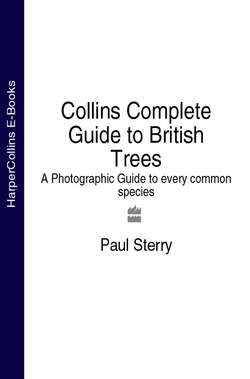Читать книгу Collins Complete Guide to British Trees: A Photographic Guide to every common species - Paul Sterry - Страница 6
ОглавлениеINTRODUCTION
Trees and shrubs are such a feature of the British scene that many people take them for granted. However, imagine what the landscape (not to mention the parks and gardens) of Great Britain and Ireland would be like without them and you can begin to appreciate their significance. Indeed, in many ways it is our trees and shrubs, more than other living things, that help define what we think of as the British countryside.
Native tree species have an ecological significance that goes beyond their individual presence. The role they play in the ecology of our native woodlands particularly fascinates me, perhaps more than their appearance. So I make no apologies for this book being biased in favour of native species. However, introduced trees and shrubs also have a role to play in today’s world. Some are widely naturalised, many soften our otherwise often brutal urban landscapes and still more are familiar and valued features of mature gardens. Consequently, I have included a wide range of familiar planted species, along with a selection of more unusual or exotic trees and shrubs mostly associated with collections and arboreta.
Whether planted or growing in the wild, the Common Beech produces autumn colours that cannot fail to lift the spirits.
Known best for its colourful berries, the Rowan is widely planted in urban settings and is a welcome sight in autumn.
My personal interest in trees and shrubs extends beyond enjoyment of trees for their own sake and their role in our ecology. I am also fascinated by the uses of timber and tree products in woodland crafts and traditional practices. Sections of the book reflect this interest.
THE REGION COVERED BY THIS BOOK
The region covered by the book comprises the whole of mainland England, Wales, Scotland and Ireland, as well as offshore islands including the Shetlands, the Orkneys, the Hebrides, the Isle of Man, the Isles of Scilly and the Channel Islands.
THE CHOICE OF SPECIES
The coverage of the book is restricted mainly to what most people understand to be trees and larger shrubs; the former are usually defined as single-boled plants with a trunk that exceeds 5m, while shrubs are typically multi-stemmed. However, for the sake of completeness, and as a minor self-indulgence, I have also included native members of tree groups such as willows and birches that should not qualify for inclusion, in the strict sense, on the grounds that they are too small.
Complete British Trees will enable amateur naturalists to identify all native and widely naturalised tree and shrub species found growing wild in the British countryside. With an eye to the exotic, it also allows naturalists and gardeners alike to identify ornamentally planted trees, and to anticipate what any given specimen tree will look like if bought and planted. I hope that the range of popular garden species included in the book helps in this regard.
